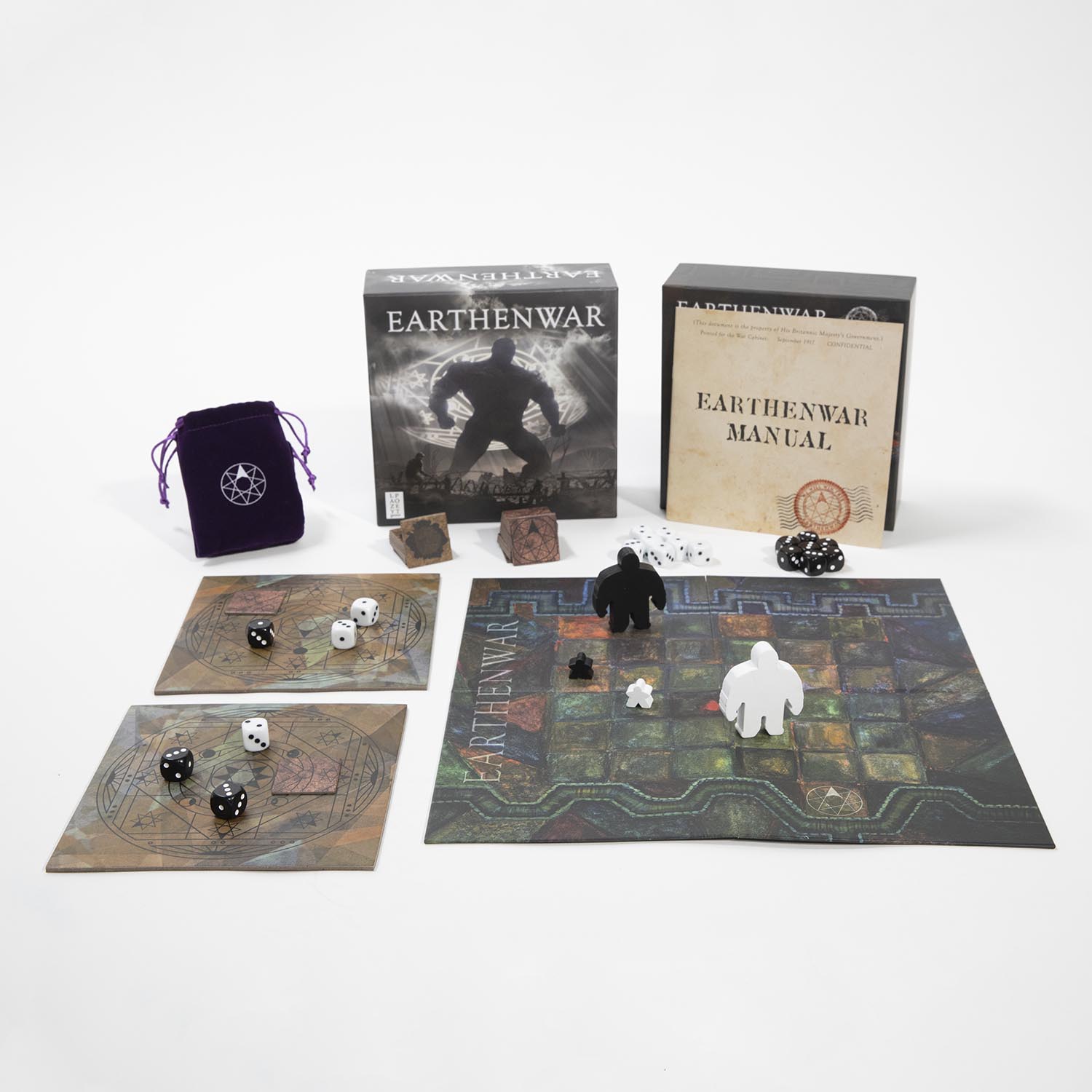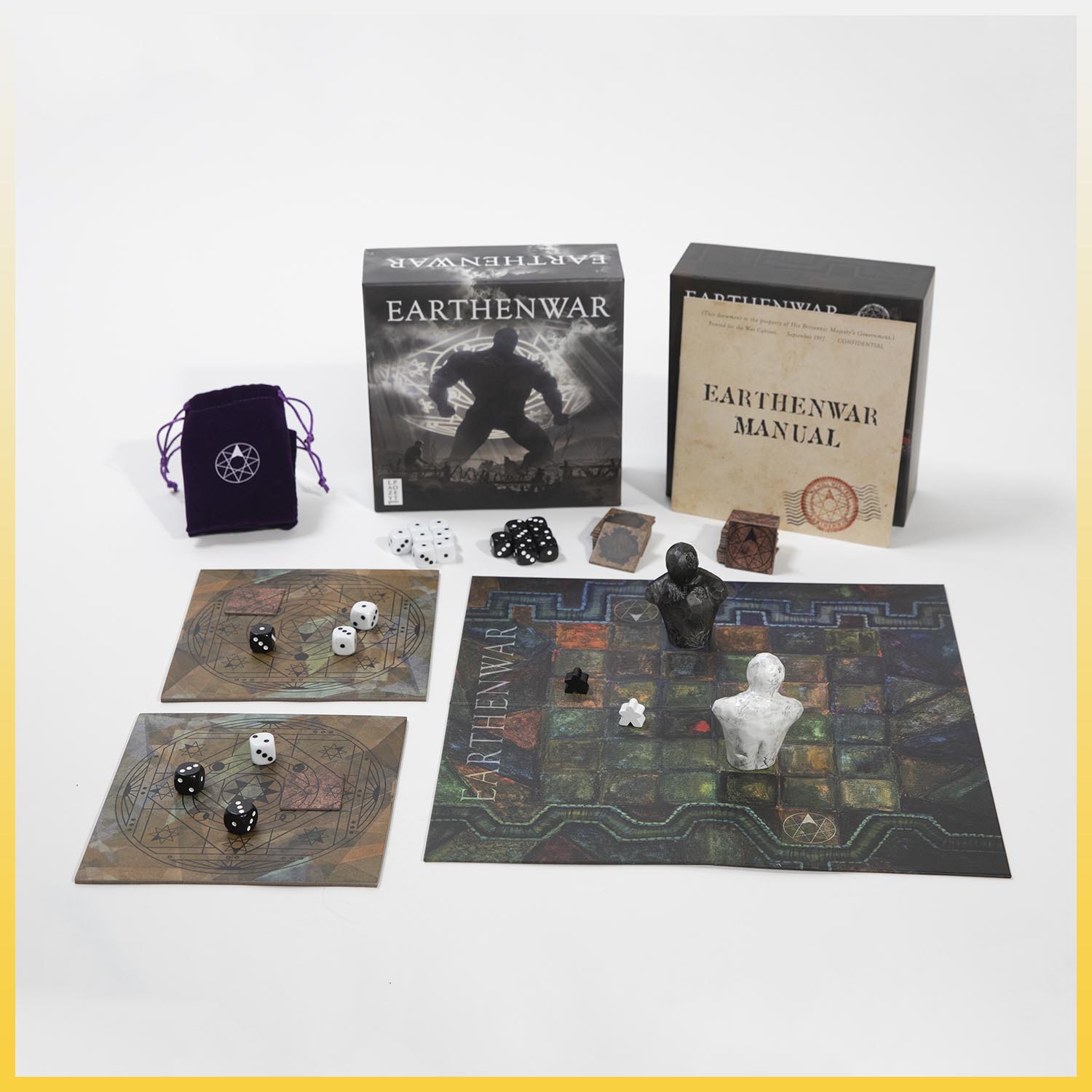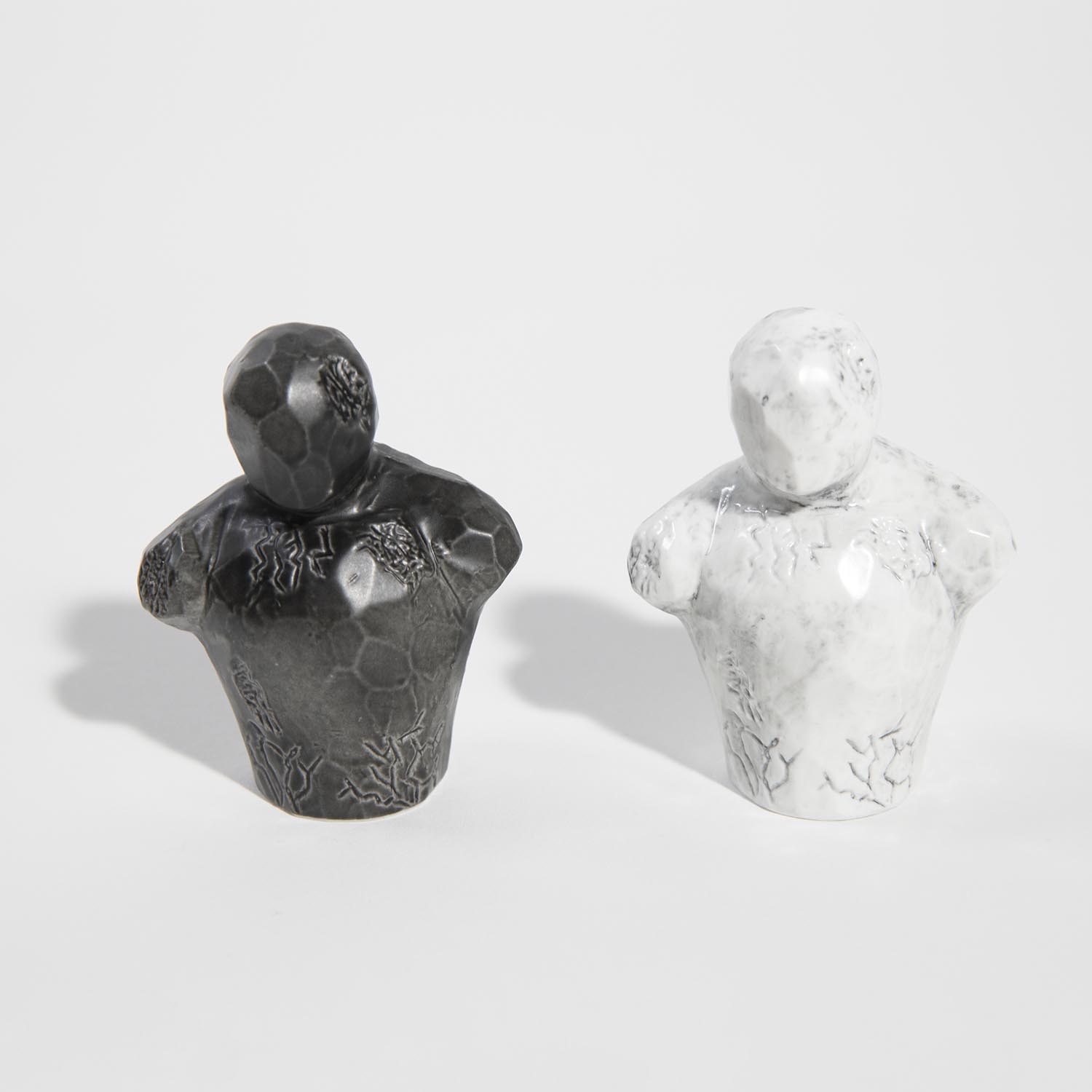
Base Game
Contains the base game, everything you need to play.
£25 + p&p
Base Game
With wooden golems£25 + p&p

Earthenwar is a two-player combat game, set during World War One.
Players each use a unique Control Grid of dice to control their Golem.
Using your magic Control Grid, you will remotely determine the actions of your Golem from far behind the Front Lines.
You must destroy the enemy before they can destroy you.
The pieces in the deluxe version of Earthenwar are made from fine bone china. Specially manufactured by professional craftsmen and -women in the heart of England.
- 2 players
Contains the base game, everything you need to play.
£25 + p&p

Contains the base game, plus two specially-made ceramic golems for the full Earthenwar experience.
£42 + p&p

Two ceramic golems if you already own the base game and want to upgrade, or just want some powerful artefacts.
£17 + p&p